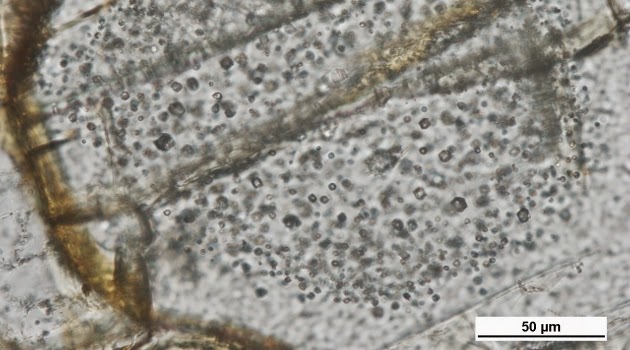
An Uppsala-led research group has presented the first verified discovery of diamonds in Swedish bedrock. The diamonds are small, but provide important clues to the geological evolution of rocks.
‘The diamonds we have found are of more scientific value than economical, but they are real diamonds’, says Jaroslaw Majka at the Centre for Experimental Mineralogy, Petrology and Geochemistry, who has led the study
While diamonds have reputedly been found loose while panning for gold in northern Sweden, none of these have been undisputed, and none have been found inside a rock.
When a continent collides with an island arc or another continent, parts of the crust of the subducted continent may be buried to depths exceeding 100 kilometres, and exposed to pressures which can cause formation of diamond. These are nowhere near the size of normal gemstone diamonds, but provide important clues to the geological evolution of rocks.
The burial process leads to a substantial density increase in silicon dioxide-rich rocks which should inhibit its exhumation (‘uplifting’) back to Earth’s surface. However, in rare cases diamond-bearing rocks can be observed at the surface. Such silicon dioxide-rich rocks containing diamonds have now been discovered in Sweden (the Snasahögarna mountains in Jämtland) by a group of researchers and students from Uppsala University (Jaroslaw Majka, Åke Rosen and Iwona Klonowska) together with colleagues from Slovakia, Germany, Poland and Japan.
This discovery calls for a general reconsideration of existing exhumation models of deeply buried continental crust. Jaroslaw Majka and the group have proposed that exhumation can be facilitated by local reduction of horizontal compressive stress to a level below the lithostatic pressure, resulting from the downward extraction of the Earth’s mantle wedge above the subducting continental crust. This new and innovative mechanism would work more or less like a mega-scale vacuum-cleaner, which sucks heavy diamond-bearing rocks back to the surface.
Notably, the discovery started with a Masters´ project of Åke Rosen, who presented his first results during a meeting organized by the Mineralogical Society of Sweden (SMS) in 2013.
The results are published in the article “Microdiamond discovered in the Seve Nappe (Scandinavian Caledonides) and its exhumation by the “vacuum-cleaner” mechanism” in the highly-ranked journal Geology.
Reference:
“Microdiamond discovered in the Seve Nappe (Scandinavian Caledonides) and its exhumation by the ‘vacuum-cleaner’ mechanism.” Geology, G36108.1, first published on October 24, 2014, DOI: 10.1130/G36108.1
Note : The above story is based on materials provided by Uppsala University










